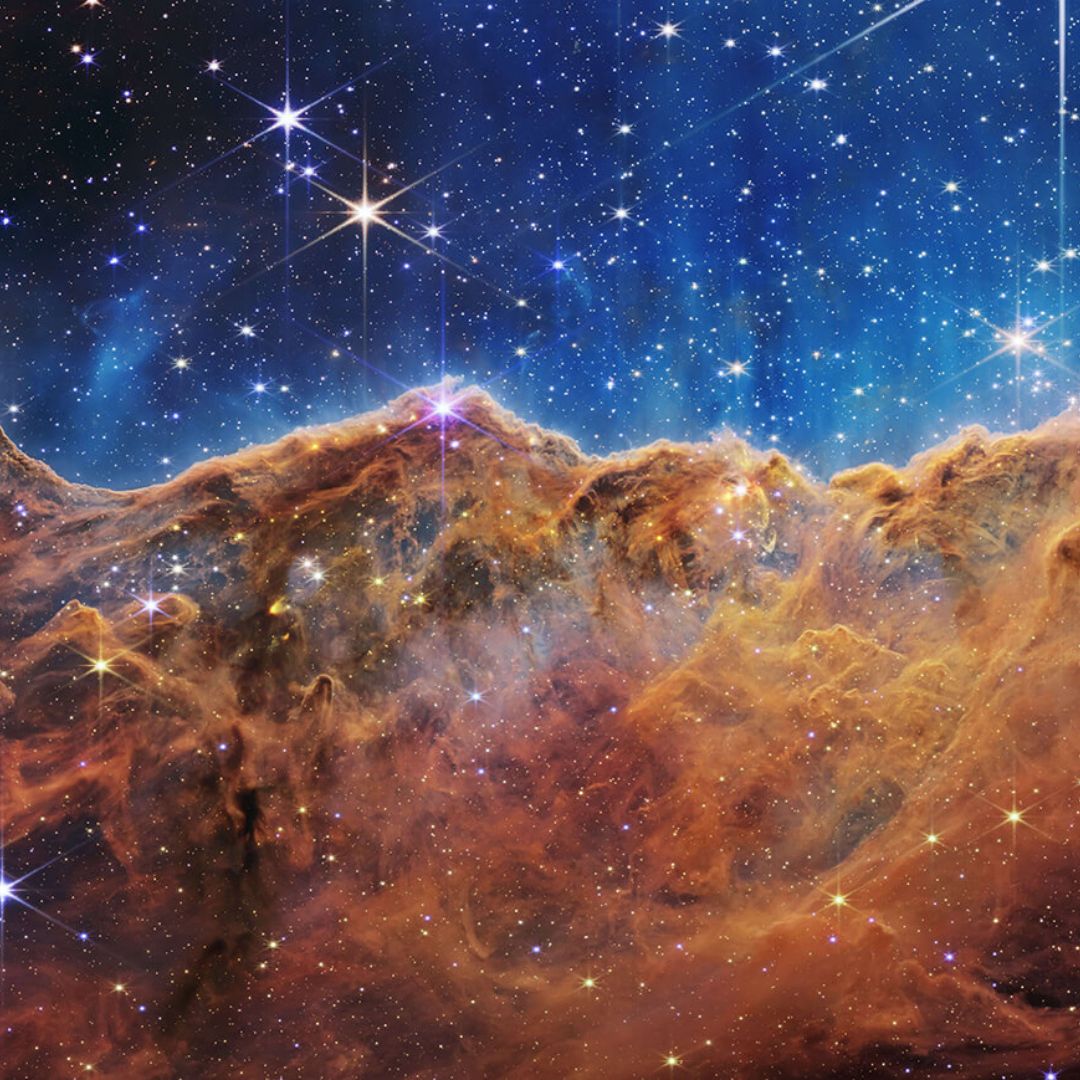The James Webb Space Telescope launched on December 25, 2021, is the largest and most powerful space telescope ever created. It is the successor of the Hubble telescope that released its first image on July 12, 2022. It aims to enable researchers to examine the state of the universe 200 million years after the Big Bang. Some of the very first galaxies to develop will be visible in photographs taken by the telescope. It will also be able to observe objects in our solar system from Mars outward, see into dust clouds to determine where new stars and planets are developing, and investigate the atmospheres of planets circling distant stars.
Also Read, NASA Artemis Moon Mission: All You Need To Know

James Webb Space Telescope Discoveries & Interesting Facts:
1. Images That Have Been Captured By The James Webb NASA Telescope
Since its launch on December 25, 2021, the James Webb telescope has provided a significant amount of information with image data. It has captured some of the most awe-inspiring cosmic images with greater details than those provided by NASA’s Hubble telescope.
The James Webb Telescope surprised people all over the world with the release of its first image of the Carina Nebula, Southern Ring Nebula, and Stephen’s Quintet on July 12, 2022.



The most recent images that left us in awe were of the Tarantula Nebula and the clearest images of Neptune which showed its rings. Tarantula Nebula images were released on September 6, 2022, and the photos of Neptune’s ring were published on September 21, 2022.


2. Indian Scientists That Were A Part of the James Webb Telescope Project
A large group of genius scientists were involved in the success of NASA’s James Webb Telescope. But do you know the 3 Indian-origin scientists who were also behind the success of this revolutionary space telescope?
Hashima Hasan
Lucknow-based Dr. Hashima Hasan is the Deputy Program Scientist of the James Webb Space Telescope mission. She expressed her dream of becoming a scientist in an interview which began when she was just 5 years old. When she was young her grandmother had taken her out in the backyard to spot the Sputnik satellite. As a Deputy Program Scientist, Dr. Hasan ensures that the James Webb Telescope mission stays true to NASA’s strategic objectives.

Source: JWST
Kalyani Sukhatme
Kalyani Sukhatme was born in Mumbai and works at NASA’s Jet Propulsion Laboratory. She is working as a Project Manager for the Mid-Infrared Instrument (MIRI) on James Webb Space Telescope. MIRI is one of the four key instruments that support NASA’s James Webb Telescope mission. Her journey as a Project Manager at MIRI began in 2010, and since then Kalyani has contributed significantly to the development of infrared detectors which is a vital component of the James Webb Space Telescope.

Source: JWST
Kartik Sheth
NASA’s Programme Scientist Kartik Sheth is a member of the communications team of the James Webb mission. He has received NASA’s Diversity, Equity, and Inclusion Award for his work against racism within the organization. Apart from his contribution to the success of the James Webb Space Telescope, Kartik has also been behind the success of SOFIA, Spitzer, the Origins Space Telescope, and the Hubble fellowship program.

Source: JWST
3. Interesting Facts About The James Webb Space Telescope
- The size of Webb telescope is as big as a tennis court and is as tall as a three-story building.
- A light that is undetectable to the human eye is seen by the James Webb Space Telescope. We experience heat from this light, which is known as infrared radiation. The infrared cameras on the James Webb Space Telescope will allow it to see through cosmic dust.
- It will also be able to see objects (like the first galaxies) that are so far away that the expansion of the universe has made their light shift from visible to infrared.
- Scientists have discovered thousands of planets orbiting stars other than our Sun and they are known as exoplanets. The James Webb Space Telescope will help to study the atmospheres of these exoplanets too.
- The James Webb Space Telescope is the successor to the Hubble Space Telescope.
Watch Full Video On, #AnimalKingdom: The Largest Bear In The World

